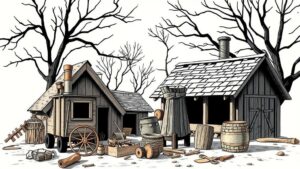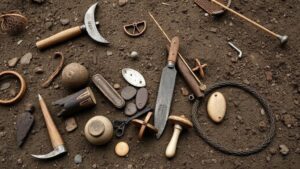Hunting for Lost Family Heirlooms in Old Mansion Gardens
Hunting for Lost Family Heirlooms in Old Mansion Gardens
The thrill of discovering lost family heirlooms in the sprawling grounds of old mansions is a captivating endeavor that combines history, nostalgia, and adventure. As families move, sell properties, or simply forget, valuable artifacts may remain buried within the gardens of these historic houses, waiting for a curious mind to uncover them. This article delves into techniques, tools, and methodologies for effectively hunting for these hidden treasures.
Understanding the Historical Context of Old Mansions
Old mansions often serve as vessels of history, holding the stories and artifacts of generations past. Many of these properties date back to the 17th, 18th, or even 19th centuries and can offer insights into the lifestyles of their original inhabitants. For example, the Biltmore Estate in North Carolina, built by George Washington Vanderbilt II, has extensive grounds that include gardens where heirlooms such as gardening tools and decorative items may have been left behind.
Before embarking on a treasure hunt, it is beneficial to research the mansions history. Understanding which families lived there, their social status, and the period they lived in can provide clues regarding what types of heirlooms are most likely hidden within the gardens.
Tools and Techniques for the Hunt
Armed with the right tools and techniques, treasure hunters can increase their chances of unearthing family heirlooms. Here are some essential items to consider:
- Metal Detector: A high-quality metal detector is one of the most crucial tools for unearthing metallic heirlooms like jewelry, coins, or silverware. Models like the Garrett AT Pro are popular due to their sensitivity and versatility.
- Garden Trowel: A sturdy garden trowel allows for careful digging to uncover buried artifacts without causing damage.
- GPS and Mapping Tools: Utilizing GPS technology can help mark areas of interest and document uncovered items precise locations, particularly in large garden spaces.
- Digging Mat: Bringing a mat helps keep the area clean and organized while searching, making it easier to spot any small items that might accumulate in loose soil.
Researching and Planning Your Search
Before setting foot in a garden, thorough research and planning are essential. Start by gathering information about the mansion, its previous owners, and significant events associated with its history. Local historical societies or archives often hold valuable records that can provide insights into what may have been lost.
Consider looking into:
- Old Maps and Blueprints: These may indicate where structures (like gazebos or fountains) once stood, which could have been central locations for gatherings and consequently, possible loss sites for heirlooms.
- Family Records and Letters: Personal letters or documents of the family might indicate particular objects that were cherished but later lost.
- Community Publications: Local news archives sometimes publish stories or announcements that reference estate sales, bereavements, or redistributions of property that may have included heirlooms.
Real-World Case Studies
Several real-world accounts illustrate the success of heirloom hunting within old mansion gardens. For example, the rediscovery of a silver candlestick set in the gardens of a manor in England that had been lost for over a century sparked significant interest and led to local heritage celebrations. This discovery emphasizes not only the potential for finding items of monetary value but also those that hold historical significance.
Another compelling story comes from a group of friends who, while hiking through the grounds of the now-defunct Carrington Hall in Pennsylvania, unearthed a forgotten family jewelry box buried near an old oak tree. box contained a collection of Victorian-era jewelry that was subsequently authenticated and donated to a local museum, highlighting community appreciation for history and shared heritage.
Potential Risks and Ethical Considerations
Engaging in heirloom hunting is not without its potential pitfalls, both legally and ethically. It is crucial to obtain permission from property owners or local governments, especially when searching on private land. In some jurisdictions, unearthing artifacts could be governed by laws aimed at preserving historical sites.
Plus, consider the cultural significance of the items being searched for. Discoveries should ideally be reported to appropriate historical societies or stored in museums to promote public education rather than kept privately.
Actionable Takeaways
- Conduct thorough research on the property and its history before embarking on your search.
- Equip yourself with the necessary tools, including a metal detector and digging equipment.
- Document your findings meticulously for reference and potential historical contributions.
- Always seek permission before searching on any property to avoid legal complications.
The hunt for lost family heirlooms can be a rewarding experience, blending adventure, history, and personal connection to the past. By understanding the context, utilizing the right tools, and following ethical practices, treasure hunters can not only rediscover tangible pieces of history but also celebrate the narratives they encapsulate.

